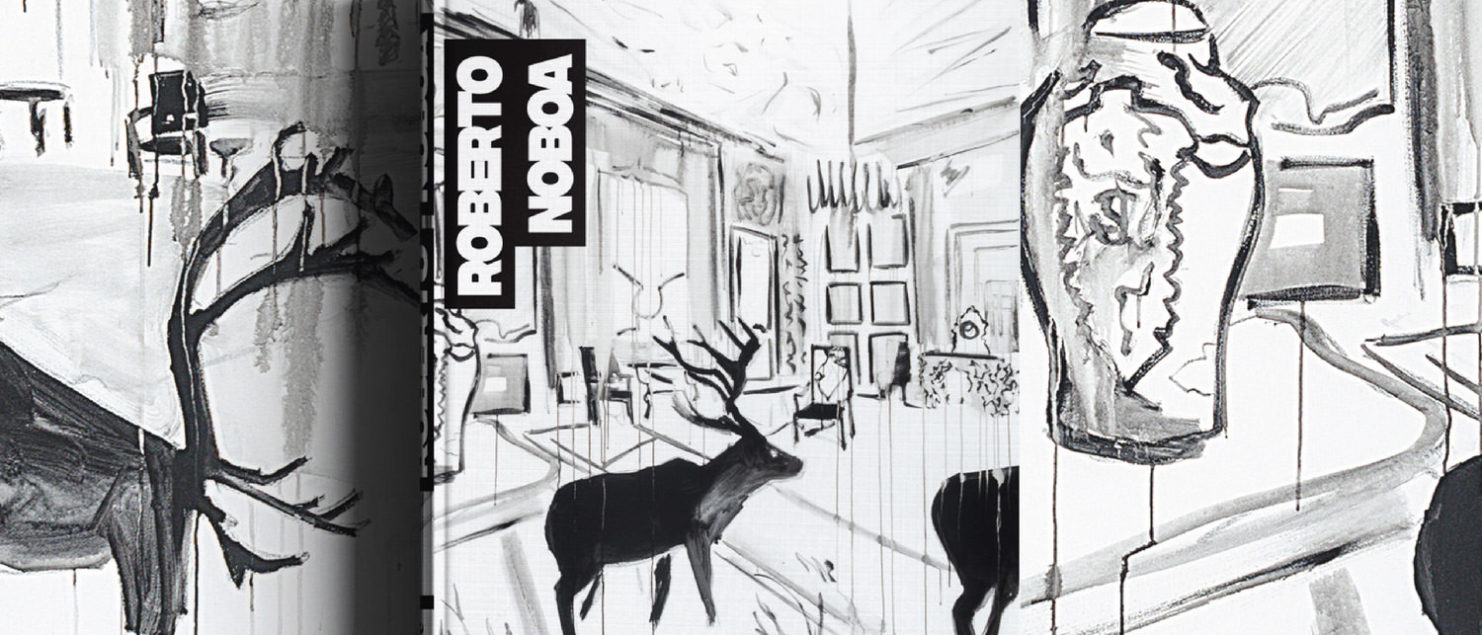Roberto Noboa
This book offers an unprecedented approach to the artist’s work through more than 250 paintings, drawings and sketches. Here we find many of his most outstanding and characteristic works, but the selection also allows us to explore a much lesser-known Noboa, which situates his production as a corpus still open to study and interpretation.
To delve deeper into his world, the publication includes contributions from three curators and art historians who have closely followed his career: the book opens with an introduction by Mónica Espinel, which counterpoints key moments in his creation, then gives way to a critical essay by Lupe Álvarez, whose main focus of study was his notebooks, series and unpublished works; and closes with a frank conversation between the artist and Rodolfo Kronfle Chambers, an exchange that illuminates little-known aspects of his upbringing and how these are woven together and manifested in his works.
Edited by Eliana Hidalgo, Roberto Noboa Texts by Rodolfo Kronfle, Lupe Álvarez, Mónica Espinel de Reich.
2019
Spanish
320 pages
Hard cover, 30 x 22 cm ISBN 978-9942-36-696-2
$70,00
Description
The work of Roberto Noboa (Guayaquil, 1970) can be understood as a space for observing human behaviour. Known as much for his paintings of tennis courts and abandoned palaces as for his flesh children and deformed chickens, his work constructs disturbing scenes whose captivating undertones are – before anything else – an invitation to think. Expressive in style, and employing a spectrum of colours ranging from the most vibrant to the darkest, his work conveys imagery charged with a relentless sincerity.
Noboa began his career in the early nineties, when the local contemporary art scene focused its attention on works whose predominant themes were social issues and political conjunctions. Always an outsider in relation to these contents, the artist never abandoned his exploration of the formal values of painting, persisting in his search for the possibilities of the medium, and understanding it as a space of expression and release in which his own experience converges with a particular look at a social environment rarely approached in Ecuadorian art. Today, his work has become an undeniable point of reference for the generations that have succeeded him.
This book offers an unprecedented approach to the artist’s work through more than 250 paintings, drawings and sketches. Here we find many of his most outstanding and characteristic works, but the selection also allows us to explore a much lesser-known Noboa, which situates his production as a corpus still open to study and interpretation.
To delve deeper into his world, the publication includes contributions from three curators and art historians who have closely followed his career: the book opens with an introduction by Mónica Espinel, which counterpoints key moments in his creation, then gives way to a critical essay by Lupe Álvarez, whose main focus of study was his notebooks, series and unpublished works; and closes with a frank conversation between the artist and Rodolfo Kronfle Chambers, an exchange that illuminates little-known aspects of his upbringing and how these are woven together and manifested in his works.
These pages review Noboa’s production on the basis of an unconventional thematic organization, through four galleries-chapters that in different ways put his paintings in dialogue with each other. In the first, entitled ‘Lanzaban Sillas’, we find works that outline his interest in childhood as a stage of innocent impudence and impunity in which freedom is exercised in a – to say the least – radical way. The gallery En el lugar equivocado (In the Wrong Place) is an account of his treatment of space, followed by Ni frío ni calor (Neither Hot nor Cold), which brings together works that highlight duality as a concept, and closes with Por ahí pasaron (That’s Where They Went), a collection that highlights the presence of the characters -from animals to monsters- that populate his paintings. Although many works can be related to more than one of these themes at a time, these groupings outline suggestive ways of approaching the artist’s work.







